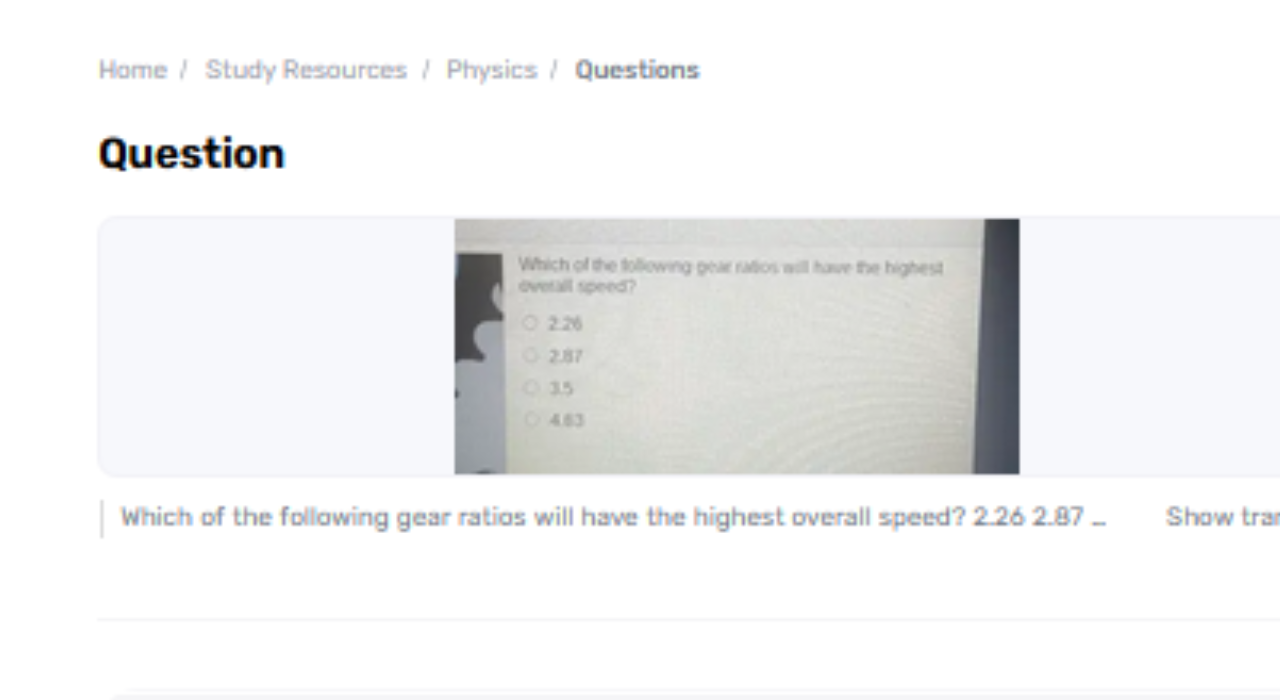Equip proportions play a significant part in deciding the speed and execution of mechanical frameworks, particularly in vehicles like cars and bikes. Understanding how adapt proportions influence by and large speed requires getting a handle on their effect on the relationship between the input and yield speeds. To decide which of the following gear ratios will have the highest overall speed? 2.26 2.87 3.5 4.63, we got to investigate the mechanics behind adapt proportions and their suggestions for speed.
Ideal Equip Proportion for Greatest Speed
To realize the most elevated by and large speed, selecting the ideal equip proportion is vital. Among the given options 2.26, 2.87, 3.5, and 4.63 the 2.26 equip proportion will create the quickest speed. Usually, a lower equip proportion permits the yield component to turn speedier relative to the input, maximizing the system's speed proficiency.
Understanding Adapt Proportions
An adept proportion is the proportion of the number of teeth on two fitting gears or the proportion of the input gears' rotational speed to the yield gears rotational speed. It characterizes how numerous times the yield equip pivots for each turn of the input adapt. A lower equip proportion implies that the input adapt will turn more times relative to the yield adapt, driving to higher speeds but lower torque. On the other hand, the next equip proportion implies the yield equip turns more times for each input equip revolution, which by and large comes about in expanded torque but decreased speed.
Impact of Adapt Proportions on Speed
To analyze the impact of diverse equip proportions on by and large speed, consider that the speed of a vehicle or a machine is straightforwardly affected by the adapt proportion. With a lower equipment proportion, the vehicle's wheels will turn quicker relative to the motor speed. For case, an equip proportion of 2.26 implies that for every 2.26 turns of the input equip, the yield equip makes one total revolution. This lower proportion permits for higher rotational speeds of the wheels or the yield component, which interprets into more noteworthy in general speed.
Comparing the Given Proportions
Given the adapt proportions of 2.26, 2.87, 3.5, and 4.63, the most reduced proportion will create the most elevated general speed. Typically the lower the adapt proportion, the less lessening there is between the input speed and the yield speed. In this manner, the adapt proportion of 2.26 will permit the yield to equip to pivot the quickest for any given input speed, driving to the most elevated by and large speed of the framework. On the other hand, the equip proportions of 2.87, 3.5, and 4.63 will result in dynamically slower speeds as they speak to higher proportions that diminish the yield speed relative to the input speed.
3 Steps to Total Homework Successfully
1. Organize and Arrange:
Begin by posting all your homework errands and due dates. Separate bigger ventures into smaller errands and prioritize them concurring to their due dates and complexity.
2. Focus and Work:
Set up a distraction-free consideration range and designate particular time openings for each task. Utilize efficiency strategies, such as the Pomodoro Method, to preserve concentration and effectiveness, with brief breaks in between.
3. Review and Reexamine:
Once you wrap up your homework, go through it to check for botches or lost parts. Adjust any mistakes and guarantee you’ve taken after all enlightening. Look for criticism on the off chance that required to clarify any instabilities.

Conclusion
In outline, among the gear ratios provided 2.26, 2.87, 3.5, and 4.63 the 2.26 proportion will convey the highest overall speed. This is often due to the nature of equip proportions, where a lower proportion comes about in a more noteworthy yield speed for a given input speed. Understanding this relationship is essential for optimizing execution in different mechanical frameworks, whether for high-speed applications or errands requiring critical torque.


